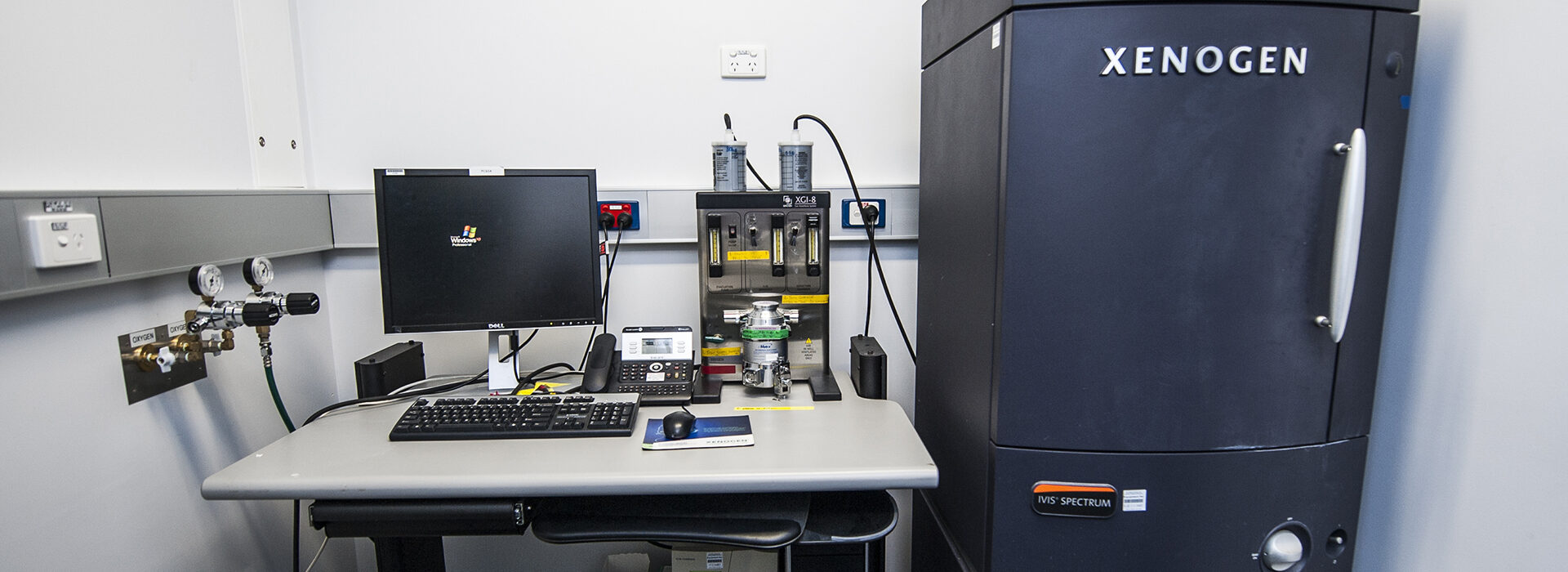The PerkinElmer IVIS Lumina S5 system utilises non-invasive imaging to monitor either bioluminescence or fluorescence located in targeted tumour or diseased cells. This allows for longitudinal imaging experiments to monitor progression of disease states in vivo.
The system allows for a variety of imaging area sizes and can be used with isolation imaging chambers to ensure there is no cross-contamination between experiments. For fluorescent imaging there are 12 excitation filters and 24 emission filters that can be utilised.
A supercooled CCD camera gives users highly sensitive detection with low background noise and includes camera binning options to select for enhanced resolution or enhanced sensitivity depending on the user’s requirements.




